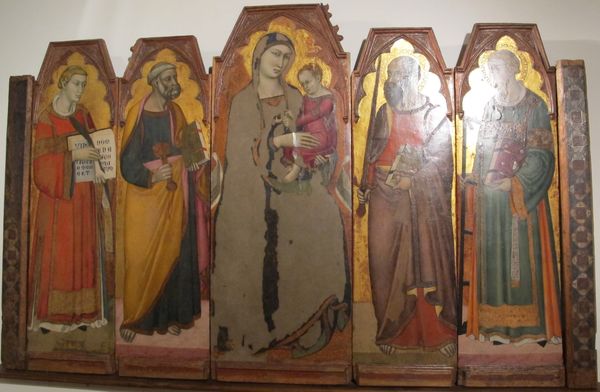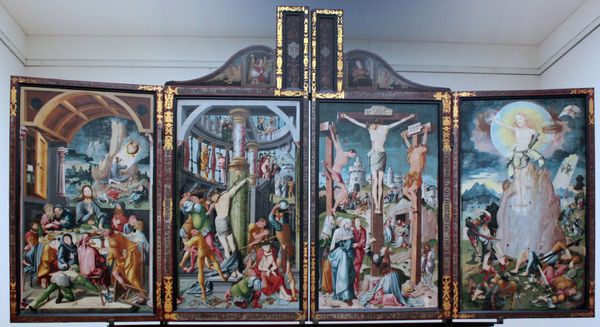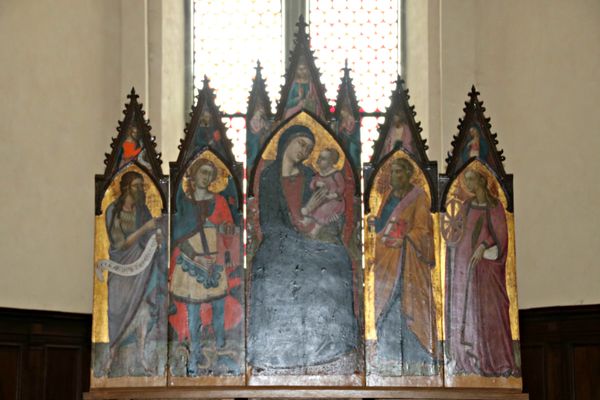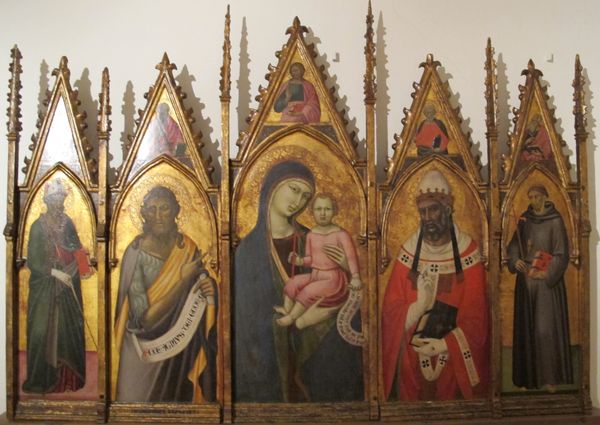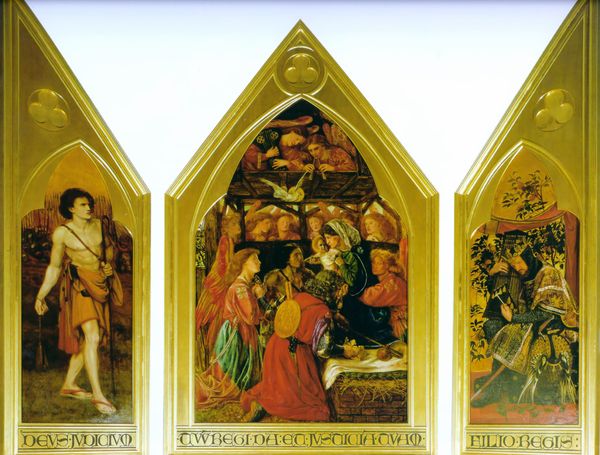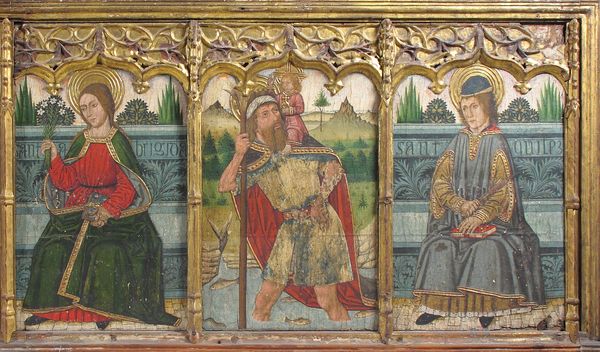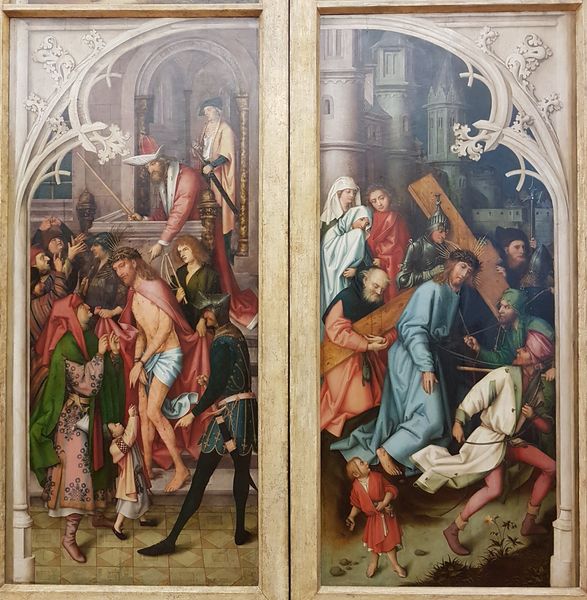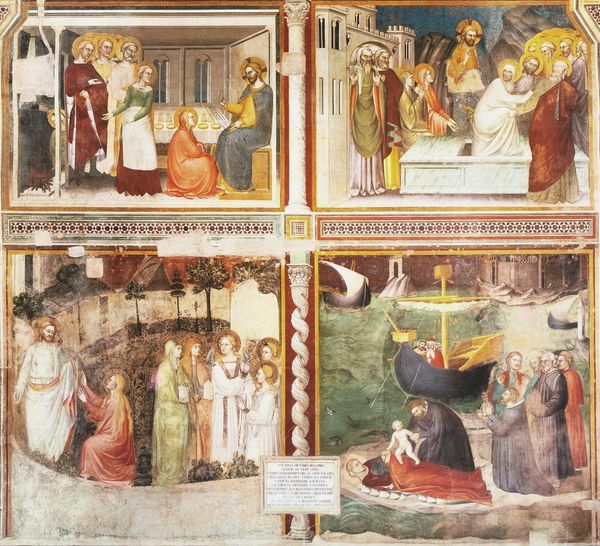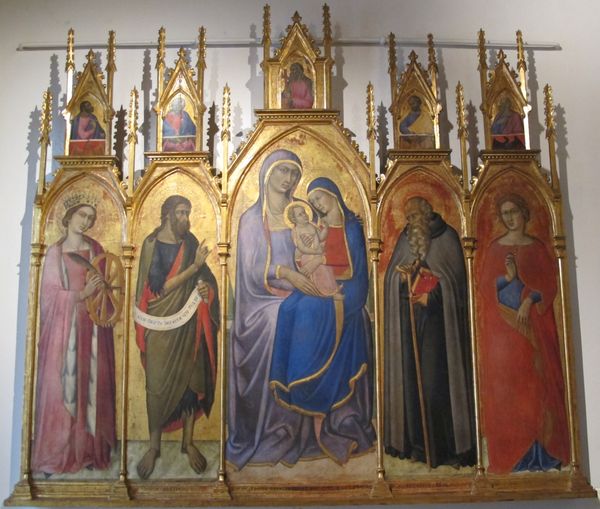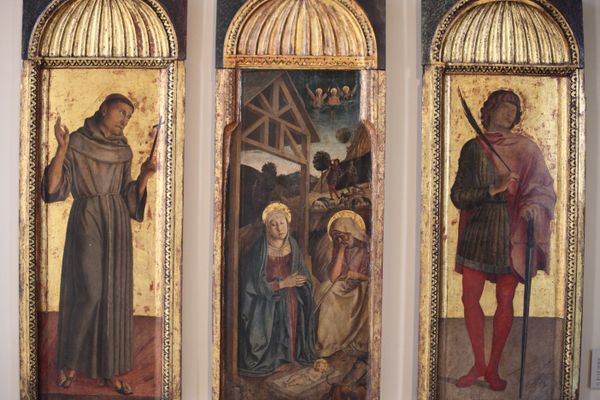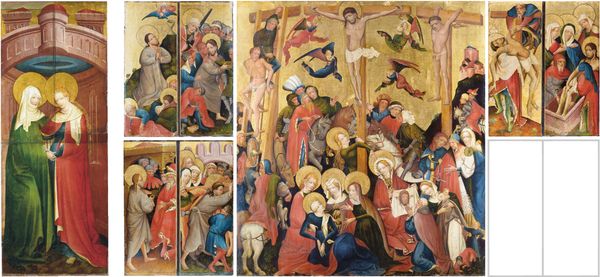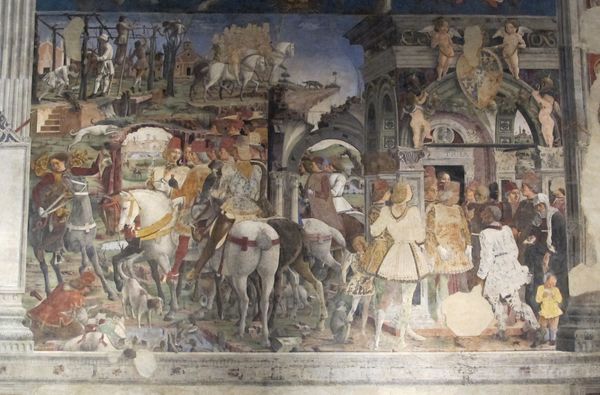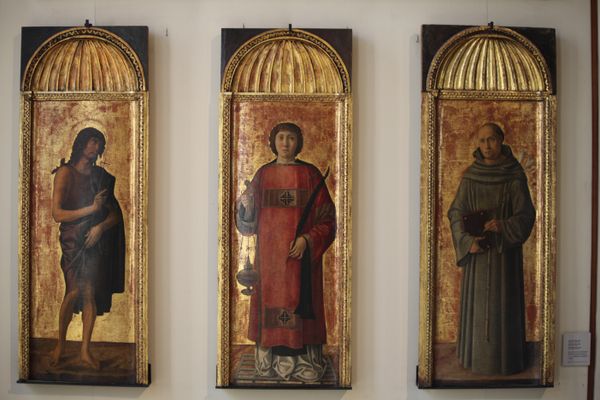
panel, tempera, painting
#
portrait
#
medieval
#
panel
#
tempera
#
painting
#
landscape
#
figuration
#
historic architecture
#
traditional architecture
#
history-painting
#
early-renaissance
Copyright: Public domain
Curator: Let's take a moment to discuss this impressive altarpiece attributed to Jerg Ratgeb, dating back to 1510. It's a tempera on panel triptych known as the Barbara-Altar from Schwaigern. Editor: It’s striking, isn't it? The gold leaf backgrounds catch the light, almost giving it an otherworldly feel. But the central panel—it depicts a brutal scene. I am drawn to that kneeling figure, she emanates strength amid the impending violence. Curator: Indeed. The triptych format was very popular during this period in Early Renaissance art, offering multiple panels to tell a story. It would likely have served as a visual aid and point of focus in a church. We must remember the potency of visual culture within largely illiterate populations. Editor: Absolutely. And the story here, of Saint Barbara, resonates on multiple levels. Look at how Ratgeb positions her as both a figure of religious devotion in the side panels—note the vision of Christ on the left, for example—and of resistance against patriarchal authority in the centre panel's martyrdom scene. The piece makes her active and agentive within the confines of patriarchal control. Curator: The history painting here captures much of the socio-political unrest characterizing the turn into the 16th century. Ratgeb himself, it's worth remembering, was no stranger to upheaval; he later became involved in the German Peasants' War and was executed for it. Editor: And it shows in his art! His history becomes irrevocably linked to his representation. The composition of the central panel – the contrast between Saint Barbara's stillness, humility, and defiance and the soldier's active violence against the chaotic background landscapes — speaks to a world in turmoil. Are the people observers? Collaborators? Victims? Curator: Good questions. Consider also the institutional forces that would have shaped a piece like this. Commissioned for a church in a town that would have experienced plague and famine; no doubt this artwork offered an instructive moral lens. Editor: It is through an understanding of these intersecting histories—the artistic, the social, and the biographical—that we begin to grasp the complexity and continuing relevance of this compelling altarpiece. Curator: I find the piece more striking considering its unique place within an oeuvre largely created outside a city's art environment, created under distinct local traditions. Editor: Indeed; the altarpiece invites not just reverence, but reflection on faith, power, and defiance that persist today.
Comments
No comments
Be the first to comment and join the conversation on the ultimate creative platform.
